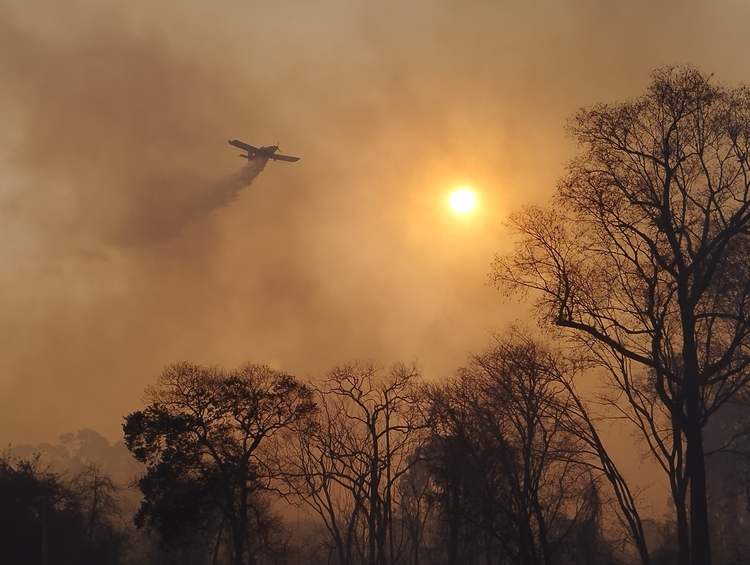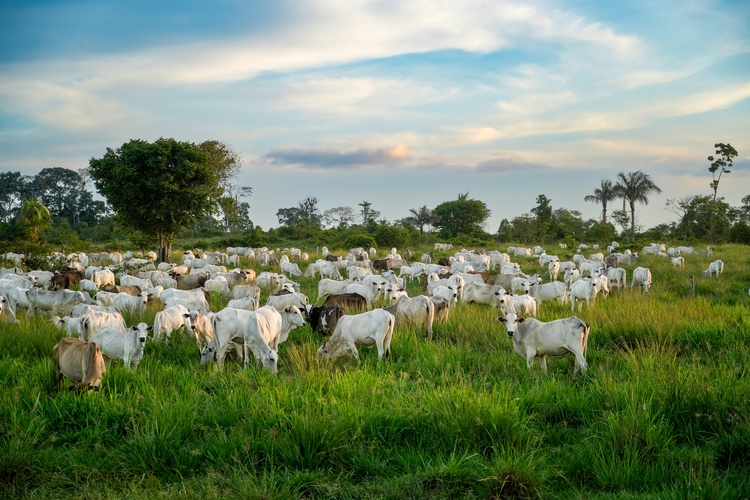
Fire has overtaken logging as the Amazon’s main driver of deforestation for the first time. As drought and heat intensify, scientists warn of a dangerous feedback loop…

By
Fire has always contributed to forest loss, accounting for around 20 per cent of annual destruction. Yet in 2024, fire surged to become the primary cause of deforestation – overtaking logging for the first time. ‘The Amazon experienced two consecutive severe droughts between 2023 and 2024, which weakened the forest and made it more vulnerable to fire, deforestation and [industrial] invasions,’ says Ana Clis Ferreira, Zero Deforestation spokesperson for Greenpeace Brazil.
The new reality is that climate change is now reinforcing forest loss – climate- related drought caused record destruction of Brazilian rainforest last year. Brazil experienced its most intense and widespread drought in seven decades, and the Amazon – once thought too wet to burn – lost more than 4.6 million hectares of primary forest to flames, the worst since records began.
Enjoying this article? Check out our related reads…
Fires release vast amounts of carbon. In 2024, fire-related global emissions from forests topped four gigatonnes – four times that of global air travel, according to Mongabay.com – and more than the annual carbon dioxide emissions from India’s fossil fuel use.
‘Fires are no longer a by-product of deforestation. They are becoming a primary engine of collapse, pushing tropical forests closer to a tipping point where recovery is no longer possible,’ says Chris Butler, a climate policy analyst at the Climate Observatory, a Brazilian climate-focused NGO.

The concern, according to Joe Eisen, executive director of Rainforest Foundation UK, is that ‘tropical forests may be approaching a tipping point long warned of by scientists, where climate change begins to fuel and accelerate the very extreme weather events that drive further forest loss.’
Climate change – hotter, drier conditions – has turned routine burns into runaway infernos, adds Butler. ‘We should be very concerned. Fires were once rare in humid rainforests; now they are becoming routine. Logged or fragmented forests dry out, making them tinder for the next blaze. This sets up a vicious cycle of degradation, in which each fire leaves the forest weaker, drier and more flammable.’
The Copernicus Atmosphere Monitoring Service found that in 2024, the Amazon and the Pantanal – Brazil’s vast tropical wetland – experienced their worst wildfires in almost two decades. The World Resources Institute reports that fires in the Pantanal are now 40 per cent more intense than they would have been without climate change. Bolivia’s wildfire-related carbon emissions for 2024 exceeded the previous annual record of 73 megatonnes, set in 2010, by mid-September.

With heavy understatement, Copernicus noted that the data ‘could be considered out of the ordinary’, citing ‘the extremely high temperatures that South America has experienced in the last few months’ and ‘the long-term drought indicated by low soil moisture.’
Peru experienced a 135 per cent increase in tropical primary forest loss due to fire between 2023 and 2024; Mexico’s tropical primary forest loss nearly doubled over the same period, mostly due to fires; and Guatemala lost 2.7 per cent of its primary forest in 2024, with widespread fires prompting the country’s president to declare a natural disaster.
Forest fires are now also having meaningful negative impacts on air quality. The 2024 Air Quality and Climate Bulletin from the World Meteorological Organization (WMO) found that ambient air pollution causes more than 4.5 million premature deaths each year worldwide.
Of greatest concern is particulate matter 2.5 microns in diameter or smaller (PM2.5), which can penetrate deep into the lungs and enter the bloodstream. In 2024, the WMO and the World Health Organization identified the highest spike in PM2.5 in the Amazon Basin, linked to record wildfires in the western Amazon and drought- fuelled fires in northern South America.




